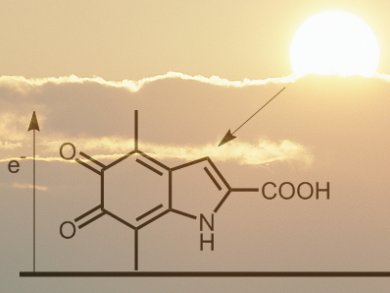Melanin is associated with radioprotection and enhanced growth in the presence of high levels of ionizing radiation. The self-restoration mechanism that prevents melanin from becoming oxidized and loosing its protective properties over time is poorly understood. Mimicking this process would be useful for radioprotective materials for satellites and other equipment exposed to high levels of radiation for long time-spans.
Charles E. Turick and co-workers, Savannah River National Laboratory, South Carolina, USA, have shown that ionizing radiation interacts with melanin to alter its oxidation–reduction potential. This allows melanin to receive electrons, countering the oxidizing effects of gamma radiation and providing the basis for the self-restoration mechanism. The work showed that constant exposure of melanin to gamma radiation results in an electric current.
- Gamma radiation interacts with melanin to alter its oxidation–reduction potential and results in electric current production
C. E. Turicka, A. A. Ekechukwub, C. E. Millikena, A. Casadevallc, E. Dadachovad,
Bioelectrochemistry 2011, 82, 69–73.
DOI: 10.1016/j.bioelechem.2011.04.009




